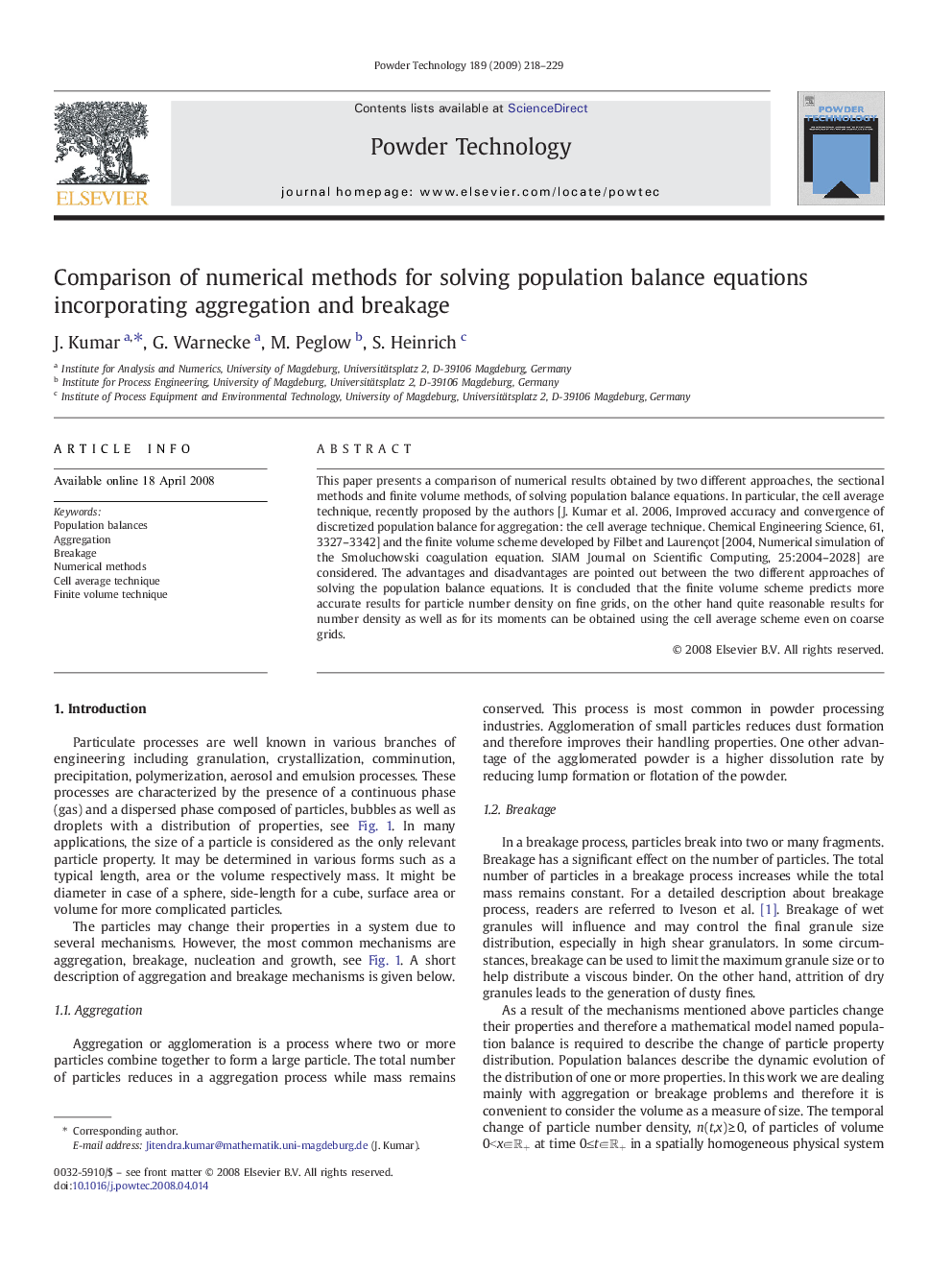| Article ID | Journal | Published Year | Pages | File Type |
|---|---|---|---|---|
| 238491 | Powder Technology | 2009 | 12 Pages |
This paper presents a comparison of numerical results obtained by two different approaches, the sectional methods and finite volume methods, of solving population balance equations. In particular, the cell average technique, recently proposed by the authors [J. Kumar et al. 2006, Improved accuracy and convergence of discretized population balance for aggregation: the cell average technique. Chemical Engineering Science, 61, 3327–3342] and the finite volume scheme developed by Filbet and Laurençot [2004, Numerical simulation of the Smoluchowski coagulation equation. SIAM Journal on Scientific Computing, 25:2004–2028] are considered. The advantages and disadvantages are pointed out between the two different approaches of solving the population balance equations. It is concluded that the finite volume scheme predicts more accurate results for particle number density on fine grids, on the other hand quite reasonable results for number density as well as for its moments can be obtained using the cell average scheme even on coarse grids.
Graphical abstractA comparison of numerical results obtained by two different approaches, the sectional methods and finite volume methods, of solving population balance equations is presented. It is shown that the number density distribution calculated by the finite volume scheme is more accurate than that obtained by the cell average technique, on the other hand the finite volume scheme produces poorer results for the zeroth moment.Figure optionsDownload full-size imageDownload as PowerPoint slide
